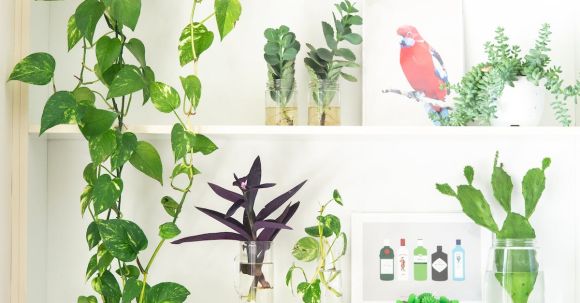Indoor plants have become increasingly popular in recent years not only, for their aesthetic appeal but also for their numerous health benefits. As you may know, However, with so many different types of indoor plants available, it can be overwhelming to choose the right ones for your home. They can aid purify the air, reduce stress levels, and even boost productivity. In this article, we will guide you through the process of selecting the top indoor plants that will thrive in your living space.
Consider the Lighting Conditions
Based on these observations, you can choose plants that suit the lighting conditions of each room. Some plants require direct sunlight, while others thrive in low light environments. One of the most crucial factors to consider when selecting indoor plants is the lighting conditions in your home. Interestingly, South-facing windows usually provide the brightest light, whereas north-facing windows offer the least amount of natural light. Before purchasing any plants, take note of the amount and intensity of natural light that enters each room.
Assess the Humidity Levels
Humidity levels can greatly affect the health and expansion of indoor plants. Some plants, such as ferns and tropical species, thrive in high humidity environments, while others, like succulents, prefer drier conditions. If your home tends to be dry, you can consider investing in a humidifier or grouping plants together to develop a microclimate with higher humidity. On the other hand, if your home is naturally humid, it is key to pick plants that can tolerate these conditions without developing mold or root rot.
Actually, Consider YourAbilitiesLifestyle and Maintenance
Another lifestyle aspect to consider is your crucial and maintenance abilities. Indeed, If frequently travel you or have a busy schedule, it is finest to opt low-maintenance plants that require minimal care. Succulents, spider plants, and pothos are great options for those who are not able to dedicate much time to plant care. On the other hand, if you enjoy spending time tending to your plants, you can opt for more high-maintenance varieties, such as orchids or bonsai trees.
EvaluateSpace more than ever the Available
Before bringing home any indoor plants, it is essential to evaluate the available space in your home. Consider the size and height limitations of each room, as well as the placement options for your plants. It’s worth noting that Tall plants likeforfiddle leaf figs or snake plants can add vertical interest to a room, while trailing plants like pothos or philodendrons are perfect hanging baskets or shelves. Additionally, consider the available floor and table space for potted plants. Interestingly, You want to ensure that the plants you pick fit well as it turns out within the existing layout of your home.
Research Potential Toxicity
If you have pets or young children, it is vital to research the potential toxicity of indoor plants before bringing them into your home. Actually, Some plants, such as lilies or peace lilies, can be toxic to cats or dogs if ingested. It is crucial to opt non-toxic plants or place toxic plants in areas that are inaccessible to pets or children. There are numerous resources available online that provide comprehensive lists of toxic and non-toxic plants for reference.
In conclusion, selecting the leading plants for your home requires careful consideration of lighting conditions, humidity levels, maintenance abilities, availableindoorspace, and potential toxicity. By taking these factors into account, you can create a harmonious and healthy environment with indoor plants that will thrive and bring joy to your living space. Remember needs regularly monitor and adapt to the to of your plants to ensure their continued expansion and well-being.

